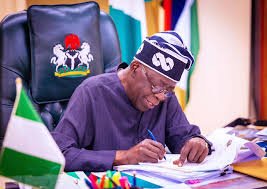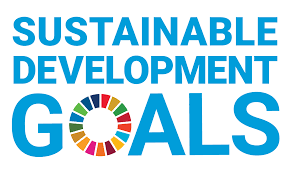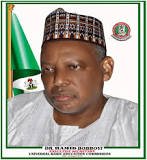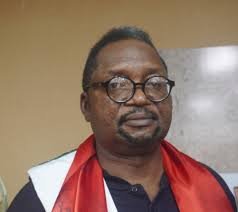
Exactly a decade ago when Nigeria, like other nations signed the United Nations Sustainable Development Goals (SDGs) in 2015 to end poverty, protect the planet, and ensure peace and prosperity for all in the next fifteen (15) years, that is by 2030. But with just five years left for the achievement of this target the horizon does not appear promising, what with the unprecedented level of multi-dimensional poverty, acute deprivation, hunger, healthcare challenges, education disparities, gender inequality, Rights abuses and water scarcity.
In light of this, Gom Mirian X-rays the progress made by the Nigerian government so far and how Nigeria has fared since the inception of the SDGs.
Urgent Need for Transformative Action and Accountable Governance
The next five years are crucial for the Nigerian governments and leaders to either pursue the SDGs with marked commitment or deliberately crash out of the journey. In the meantime, the country seems to have recorded minimal achievement in the 17 goals over the last ten years still counting. This has raised a serious concern among critical observers. But more worrisome is that the current government led by President Bola Ahmed Tinubu since the assumption of leadership in May 2023 seems not to make any drive towards meeting the benchmark of any of the goals after one year, five months in office as the president.
Goal 1: No Poverty

Poverty remains a pressing issue in Nigeria. In 2016, the National Bureau of Statistics reported that approximately 33% of Nigerians lived below the national poverty line. The COVID-19 pandemic exacerbated this situation, pushing more people into poverty due to job losses and economic instability.
According to data and analysis from the World Bank, Nigeria’s progress in reducing poverty rates since embracing the Sustainable Development Goals (SDGs) has been notably limited, as evidenced by various studies and reports. When the SDGs were adopted in 2015, a pivotal year marked by global commitments to reduce poverty and inequality, Nigeria’s national poverty rate was alarmingly high. Using the 2022 National Multid imensional Poverty Index (MPI) report to evaluate poverty across health, education, living standards, and work and shocks reveals that 63% of Nigeria’s population resides in poverty.
imensional Poverty Index (MPI) report to evaluate poverty across health, education, living standards, and work and shocks reveals that 63% of Nigeria’s population resides in poverty.
This implies that a substantial 6 out of every 10 Nigerians experience multidimensional poverty, highlighting a significant distance from attaining Goal 1 of the SDGs. This statistic is a stark indicator of the widespread economic challenges and disparities faced by a significant portion of the country’s population.
Despite ongoing efforts and initiatives aimed at poverty reduction, the situation remained largely unchanged as of June 2024, approximately 47.1% of the population, nearly half of all Nigerians, were living below the national poverty line, according to the World Bank 2024 report highlighted a concerning stagnation in economic improvement for the most vulnerable segments of Nigerian society. This stagnation is particularly noteworthy given the period’s global and national emphasis on poverty reduction as a key objective of the SDGs.
The persistence of this high poverty rate raises several critical questions about the effectiveness of the strategies employed by Nigeria in addressing this issue.
Goal 2: Zero hunger
Nigeria’s standing on the global hunger index is labelled as ’serious,’ as indicated by the latest data from the 2022 Global Hunger Index annual report.
In 2022, Nigeria was ranked 103rd out of 121 countries, and in the 2023 global hunger index, it has further slipped to 109th out of 125 countries with sufficient data. The 2023 Global Hunger Index records a score of 28.3%.
Nigeria has witnessed a continuous increase in undernourishment prevalence since 2015, with recent years displaying a performance even worse than that of 2001. The report highlights a ’serious’ hunger level for the country, scoring 27.3 on the global hunger index, measured on a 100-point scale, hence, Nigeria faces significant hurdles in achieving Sustainable Development Goal 2, which aims to eliminate hunger. Despite a slight reduction in undernourishment, dropping from 21.1% in 2013 to 20.8% in 2018, the overall situation remains deeply worrisome.
The United Nations World Food Programme’s grim forecast of over 25 million Nigerians facing acute hunger underscores the urgent need for comprehensive strategies to address food insecurity and achieve Goal 2 of the SDGs.
Goal 3: Good Health and Well-Being
The Sustainable Development Goals 3 (SDGs) aim to combat neglected tropical diseases, AIDS, hepatitis, water-borne diseases, and other communicable diseases. Nigeria’s Economic Recovery and Growth Plan aligns with the SDGs, setting a target for 2030 to reduce the maternal mortality ratio to 70 deaths per 100,000 live births. The UN reports that at least 400 million people lack access to basic healthcare, and 40% have no social protection.
Goal 3 of the SDGs seeks to ensure healthy lives and promote well-being for all ages. Nigeria, like many developing nations, faces significant challenges in achieving this goal. Although progress has been made in health outcomes, the country struggles to attain universal health coverage.
Despite a reported decrease in the maternal mortality ratio—from 814 deaths per 100,000 live births in 2015 to 525 in 2019—Nigeria’s rates remain far above the SDG target of less than 70. The healthcare system faces critical challenges, including limited access to quality services, high infant mortality rates, and insufficient health infrastructure.
Maternal and Child Health
High maternal and child mortality rates are key health challenges in Nigeria. Maternal mortality occurs during pregnancy, childbirth, or within 42 days post-delivery, while child mortality refers to deaths of children under five. These indicators reflect the overall health of the population. To tackle these issues, the Nigerian government has launched various initiatives, such as the Integrated Maternal, Newborn, and Child Health Strategy (IMNCH), which promotes antenatal care, skilled birth attendance, essential newborn care, immunization, and family planning services.
The National Health Insurance Scheme (NHIS), aims to provide financial risk protection and improve healthcare access. However, its implementation faces challenges, hindering universal coverage.
Nigerians, particularly in rural areas, still lack basic healthcare access due to shortages in healthcare personnel, inadequate infrastructure, and funding. The infant mortality rate stood at 67 deaths per 1,000 live births in 2019, significantly above the global average of 28.
To address these issues, the National Economic Recovery and Growth Plan (2017-2020) includes measures to enhance healthcare infrastructure, increase healthcare workforce numbers, and broaden service access. Health campaigns like the National Strategic Health Development Plan II (2018-2022) and the Saving One Million Lives Initiative aim to improve maternal and child health.
Communicable Diseases
Nigeria faces major challenges in controlling infectious diseases like HIV/AIDS, malaria, and tuberculosis. According to UNAIDS, Nigeria had about 1.9 million people living with HIV/AIDS in 2019, making it the second highest globally. The country also reports approximately 97 million malaria cases annually.
In response, the National Agency for the Control of AIDS (NACA) has established a National Strategic Framework focusing on prevention, testing, treatment, and support programs for HIV/AIDS. The National Malaria Elimination Program (NMEP) works to expand insecticide-treated net coverage and improve diagnostics and treatment access.
However, persistent gaps in healthcare infrastructure, particularly in rural areas, hinder effective responses to these public health challenges. Socioeconomic barriers and cultural stigma further worsen health disparities, necessitating substantial investments in healthcare capacity and community services.
Non-Communicable Diseases

Nigeria is witnessing a rise in non-communicable diseases (NCDs) such as cardiovascular conditions, diabetes, and cancers. NCDs accounted for 29% of total deaths in Nigeria in 2016, highlighting their significant impact on public health.
To address this shift, the Nigerian government has implemented a National Strategic Plan targeting risk factors, early diagnosis, and evidence-based management of NCDs. This includes raising awareness of risk factors, implementing policies to reduce tobacco and alcohol consumption, and promoting nutrition and physical activity.
Challenges such as low health literacy, limited infrastructure, and rural access to care impede successful NCD prevention and control.
Mental Health
Mental health remains a critical yet often neglected aspect of overall well-being in Nigeria. The World Health Organization estimates that around 21.7% of Nigerians experienced mental health disorders in 2019. The country faces severe shortages of mental health infrastructure and qualified professionals.
To bridge this gap, the Nigerian government has prioritised mental health within its primary healthcare system, guided by the Mental Health Policy and Strategic Plan for Nigeria (2013-2020). This framework emphasises awareness, workforce development, facility expansion, and community-level integration of mental health services.
While advocacy campaigns are working to raise mental health literacy and reduce stigma, significant barriers still exist. Increased investment is needed to realise policy goals, including training specialized professionals expanding treatment facilities and addressing cultural attitudes that discourage care-seeking is essential.
Without resolute efforts to increase investments, address systemic gaps and sensitise communities, Nigeria cannot holistically meet the mental health needs or ensure the rights of citizens impacted by mental health disorders. Prioritizing mental health is indispensable for improving quality of life and achieving sustainable good health and well-being targets.
Goal 4: Quality Education
Nigeria faces significant challenges in ensuring inclusive and equitable quality education for all its citizens, particularly for girls and those living in rural areas.
As of 2018, the net primary school enrollment rate was only 61.7%, a troubling drop from 72.8% in 2010. This means that more than a third of Nigerian children lack access to essential educational opportunities.
The barriers contributing to Nigeria’s out-of-school crisis are complex and often interrelated. In 2016, the Universal Basic Education Commission (UBEC) reported that Nigeria had the highest number of out-of-school children globally, with an estimated 10.5 million.
This underscores the urgent need for effective implementation of the State Universal Basic Education Board’s policy for free Universal Basic Education for all school-aged children.
The education sector suffers from limited financial resources, leading to inadequate infrastructure, poorly equipped classrooms, and a shortage of teaching materials. UNESCO notes that Nigeria’s education expenditure accounts for only 6% of the national budget, well below the recommended 15% set by the Education for All (EFA) initiative.
This funding shortfall severely restricts efforts to enhance educational quality and ensure equal opportunities for all children, regardless of their socioeconomic status.
A shortage of qualified teachers poses another major obstacle to achieving quality education. Nigeria lacks trained and experienced educators, particularly in rural areas, affecting the teaching and learning process. A 2024 UBEC survey indicated a shortfall of 194,876 teachers in public primary schools.
Also, the quality of teacher training programs and professional development needs significant improvement. A 2017 report from the Teachers Registration Council of Nigeria (TRCN) revealed that 50% of teachers in the country are unqualified.

A 2022 National Personnel Audit conducted by UBEC found that 67.5% of teachers in public schools and 85.3% in private schools had not participated in any in-service training in the past five years.
In addition to these issues, inadequate infrastructure—including classrooms, libraries, and laboratories—hinders quality education delivery. Many schools lack essential facilities, making it challenging for students to engage in hands-on learning and access necessary resources.
Dilapidated classrooms and the absence of basic amenities, such as clean water and sanitation, further discourage regular school attendance and limit students’ overall educational experience.
Goal 5: Gender Equality
While Nigeria has made strides toward achieving gender equality, significant disparities remain, particularly in political and economic decision-making roles. As of 2019, women held only 6.7% of parliamentary seats and represented 22.4% of the labour force participation rate. Gender-based violence and harmful cultural practices continue to hinder progress in this area.
Gender equality is a fundamental human right essential for sustainable development and is a critical component of Goal 5 of the United Nations Sustainable Development Goals (SDGs). Nigeria has implemented various measures to promote gender equality, including the National Gender Policy launched in 2006, which aims to empower women and eliminate discrimination against them in all sectors.
Nigeria has also ratified several international conventions, including the Convention on the Elimination of All Forms of Discrimination Against Women (CEDAW) and the Beijing Declaration and Platform for Action. These frameworks support efforts to promote gender equality and empower women.
In recent years, there have been improvements in female representation. For instance, the percentage of women holding parliamentary seats rose from 5.6% in 2015 to 6.7% in 2019 and women occupied 22.4% of senior management positions in Nigerian companies in 2019, up from 19.7% in 2016.
Despite these advancements, challenges persist. Gender-based violence remains a major issue, with women and girls at risk of domestic violence, sexual violence, and harmful practices like female genital mutilation and child marriage. According to the 2018 National Demographic and Health Survey (NDHS), 30% of women aged 18 to 25 reported experiencing physical violence, and 10% reported sexual violence.
Women’s participation in the labour force is still limited, with only 22.4% involved, influenced by cultural and social norms that restrict access to education and employment opportunities while women’s representation in political and economic decision-making remains low, significantly below the global average of 25% for parliamentary seats and indicating the need for further efforts to empower women in all sectors.
Goal 6: Clean water and sanitation
Access to safe drinking water and adequate sanitation facilities remains a significant challenge in Nigeria, particularly in marginalised rural areas. As of 2017, only 67% of Nigerians had access to basic water services, and just 40% could utilize basic sanitation solutions.
These deficits highlight Nigeria’s struggle to meet Sustainable Development Goal 6, which aims for universal access to clean water and sanitation by 2030. The disparities between urban and rural areas are stark, with urban centers often enjoying piped supplies while rural villages rely on untreated sources. Modern toilets are scarce in many regions, leading to widespread open defecation.
Analysts indicate that Nigeria is falling short of meeting many targets of the 2030 Sustainable Development Goals, particularly regarding poverty and hunger.
The United Nations Support Plan for the Sahel estimates that Nigeria needs approximately $337 billion to implement the SDGs effectively. As of July 2022, the outlook for the SDGs in Nigeria remains bleak, with over $300 billion required to address the widening gap between rich and poor.
Gbenga Komolafe, General Secretary of the Federation of Informal Workers Organisation of Nigeria, said, “One of the major concerns regarding poverty in the African region is the lack of serious government efforts in Nigeria to fulfil even some of the benchmarks of the SDGs.

“The SDGs elaborate specific activities and actions that would be taken by governments to achieve those goals. Unfortunately, policies and programmes of the government contradict the stated objectives and actions that are supposed to be taken in achieving the SDGs.
“For instance, SDG Goals 8 and 11 call for training and regulated access for informal workers, yet the government’s efforts in this area are minimal.”
Komolafe noted that “when the government comes up with programmes to address some of these concerns, they are politicised. Those who help them win elections help them to govern very serious programmes, and they see the programmes as avenues to enrich themselves.”
Komolafe gave an instance, saying that the former humanitarian affairs minister allegedly misused the funds to cushion the hardship caused by fuel subsidy removal.
“The incident was in the public space, but no action has been taken, and no money has been recovered,” he stated.
He noted that the SDG programmes were fading, adding, “As a result, poverty is increasing, with the National Bureau of Statistics reporting worsening multi-dimensional poverty, likely exacerbated by current government reforms.”
Way Forward
As Nigeria grapples with the daunting task of meeting the SDGs, the stark reality of broken promises and soaring hardship paints a grim picture of the nation’s trajectory. The failure to address poverty, hunger, healthcare challenges, education disparities, gender inequality, and water scarcity underscores the urgent need for transformative action and accountable governance. Nigeria’s journey towards sustainable development demands a radical shift in priorities, robust policy interventions, and a genuine commitment to uplifting the lives of all its citizens. Failure to heed this call risks further entrenching the cycle of poverty, inequality, and deprivation, casting a shadow over the nation’s aspirations for a brighter future.



